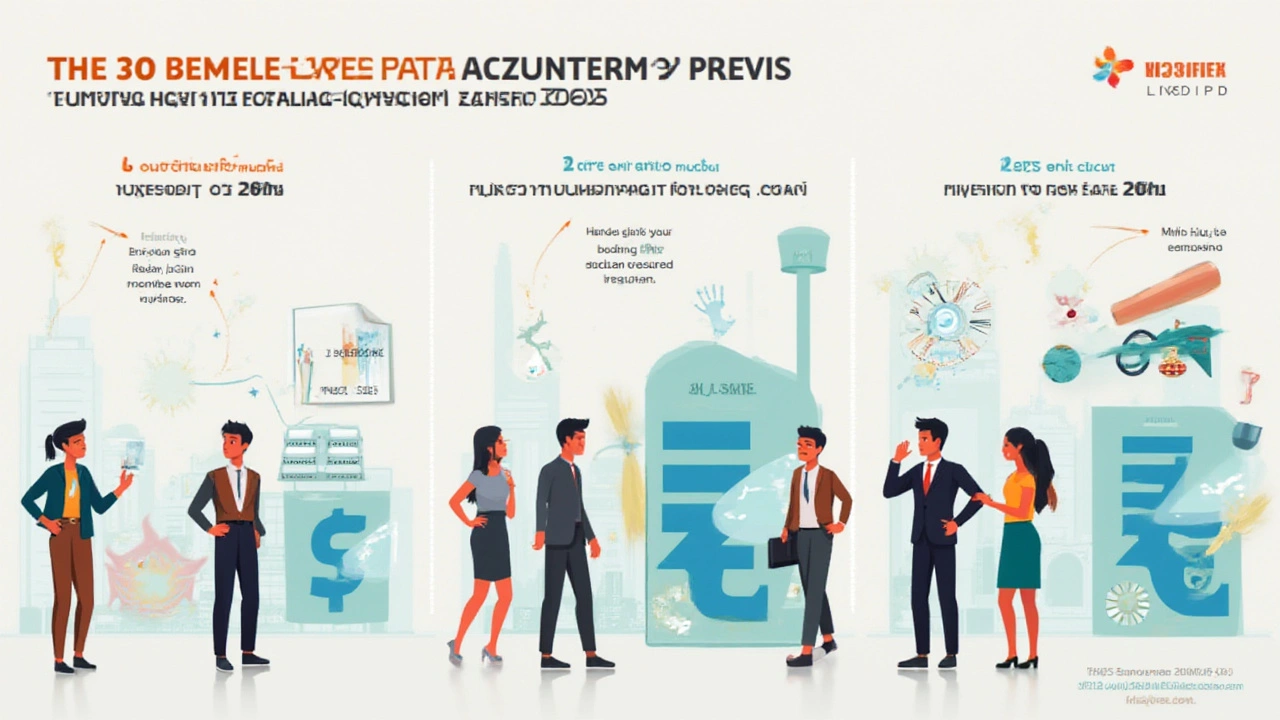
Picture landing a federal government job and expecting a fancy paycheck—then discovering there’s a whole system behind the scenes that decides exactly what you’ll make. The truth about the lowest federal government salary isn’t hidden, but most people don’t know how it’s set, where to look it up, or why some folks with the same job can earn quite different paychecks based on their location. If you’re sizing up a potential federal gig because you want stability, or you’re just curious about that “lowest rung,” there’s a surprising amount to unpack. The smallest salary Uncle Sam hands out in 2025 comes with some classic government-style rules, but also a fair bit of myth-busting. Let’s unravel what “starting salary” really means for federal jobs and what your bank account could look like if you start at the bottom of that pay ladder.
The Federal Pay System and the Lowest Salary: How the Numbers Work
If you’re used to the private sector, federal pay can seem like a mystery at first. But everything hinges on the General Schedule (GS) pay scale, covering about 70 percent of federal civilian jobs. This scale—and I’m not joking, it’s a legit 15-grade grid—lays out exactly what every step pays, right down to the dollar. So, what’s at the lowest end? For 2025, the lowest federal government salary is pegged to the bottom rung: GS-1, Step 1. According to the official table released this year by the Office of Personnel Management, a GS-1 Step 1 makes $22,623 per year before taxes if they’re working in the “Rest of U.S.” pay area—that’s outside of big metro zones with higher locality pay.
Let’s break that down: GS-1 is the starting grade for jobs that require little or no formal education after high school—think messenger, mailroom clerk, or some entry admin roles. Step 1 is the “fresh-out-of-the-gate” rank, with no experience yet. The GS system is probably the most transparent ladder out there: you can literally see what everyone makes. Each grade has 10 “steps,” so someone sticking around at GS-1 for several years could earn more, but most people move up grades pretty fast.
Is that really all someone could make? If we’re talking base salary, yes. But here’s a twist: federal employees in certain cities get a “locality” bump—think New York, D.C., San Francisco—so that bottom-line number rises. In D.C. for instance, the lowest GS-1 salary jumps up to $27,766 in 2025. That big difference shows how much Uncle Sam tries to level the living-cost playing field, even for the earliest jobs. Still, unless you’re a teenager just getting started or filling a very niche role, most folks won’t stay at GS-1 for long because jobs at higher GS grades aren’t too hard to score if you’ve finished high school or gained some skills.
Fun fact: The GS scale has barely budged at the lowest end for years—Congress rarely votes for huge pay jumps—but cost-of-living adjustments sometimes come through in small doses. So, a federal worker at the lowest rung in 2020 made $19,738, which means a little progress for those just climbing aboard.

Types of Jobs That Start at the Lowest Federal Pay Grades
So, what kind of work lands you at GS-1 in 2025? Not as many as you might think. In most cases, federal agencies start new hires a bit higher—usually GS-2 or GS-3—especially if someone’s got even a modicum of job experience or a GED. Still, a handful of jobs begin at GS-1, either as temporary roles, internships, or basic seasonal work. You might file mail in a distribution center, run basic errands, or handle the simplest clerical tasks in a big federal warehouse. Some summer hires, high school student programs, or laborer jobs (think park service or national grounds maintenance) might open at GS-1. Don’t expect to stay there for long—there’s a system that helps you move up pretty quickly.
Here’s a real-world example: a friend of mine started a summer job with the National Park Service in Wyoming as a GS-1 laborer. That job meant cleaning facilities, mowing, and painting park benches. After a year and showing reliability, she applied for a permanent role and bumped up to GS-3, with a much nicer paycheck and health benefits. So, while the lowest GS-1 salary looks tiny on paper, it’s usually a stepping stone, not a long-term track for federal employees.
By the way, the government isn’t running sweatshops. There are a pile of laws and rules about step increases (called "within-grade increases"), promotions, and fair hiring practices. Once you’ve put in a decent stretch—usually a year, sometimes less—there’s nearly always an automatic bump up the GS ladder.
It’s worth mentioning what you don’t see at the lowest salary. Most professional fields—IT specialists, scientists, engineers, policy analysts—start much higher up, at GS-5 or above. So, if you have college or even some college, expect to leapfrog those lower grades entirely. The lowest end is most often filled with jobs for young people, seasonal workers, or career starters testing the waters before moving into something more advanced.

Negotiating Your First Federal Salary and Growing Beyond GS-1
One thing that catches people by surprise: the “take it or leave it” feel of the GS system. When you’re hired into a federal role, your salary is nearly set in stone, pegged to your grade and step. So, can you negotiate? Sort of. If you have strong qualifications, advanced education (even if you’re just out of college), or special experience, you can sometimes score a higher starting grade. For instance, the government allows for something called “superior qualifications appointments” (yep, bureaucratic lingo). Say you learned a rare language or have special skills—it absolutely pays to bring that up during hiring, because some managers can start you higher on the pay ladder.
Tips if you’re just getting started:
- Check every vacancy announcement on www.usajobs.gov for its starting GS grade. Don’t just look at the title—look at that GS number and the salary range listed.
- If the job is at GS-1 or GS-2 but you already have work experience or college credits, see if you can be considered at a higher grade. Some agencies let you “qualify up.”
- Be honest about your skills and background when you fill in your application and in interviews. Agencies are big on transparency, and you won’t get far fibbing about credentials.
- Ask about what it takes to move up. Sometimes you’re eligible for a step increase after just 6-12 months of good work.
- If you live in a high-cost city, check the “locality pay” charts. That could boost your bottom line by thousands.
And here’s the kicker if you’re debating a government career: the “lowest salary” is just your starting point. Most people don’t stay at GS-1 more than a year, if that. Federal jobs, unlike a lot of private-sector gigs, come with built-in pathways for regular raises in your grade and step, strong health and retirement benefits, and a lot of job security. In my family, my uncle started as a GS-2 in the U.S. Postal Service in the mid-1980s—and retired out of management decades later with a fat pension. It’s not uncommon for people who start low to finish high if they stick with it and smartly grab opportunities for advancement and training.
So, while GS-1, Step 1 might be the lowest possible salary the federal government pays in 2025, it’s more like a launchpad than a trap. The real trick is understanding the system—from the minute you spot a vacancy listing, all the way to negotiating a better entry point, and then making plans to climb up. Whether you want stability, which Alisha always reminds me is underrated, or you’re looking for a career open to real-life advancement, knowing how pay grades work is the real secret to turning a modest start into something way bigger.
More Articles

Which Branch of IIT is Toughest?
When it comes to choosing the toughest branch at the Indian Institutes of Technology (IIT), opinions vary widely depending on one's interests and strengths. This article explores the challenges and demands across different branches, with an objective focus on their rigor. Understanding the difficulty levels can help aspirants better prepare for their IIT JEE journey. We'll offer practical insights to guide students through deciding which path might be the best fit for them. Along the way, discover strategies for dealing with the rigors of whichever branch you choose.

Which Country Has the Hardest Math? Rankings, Exams & Tips
Explore which country has the toughest math curriculum using TIMSS, PISA, and IMO data, and learn actionable strategies for acing competitive exams.

How to Learn Basic English for Free: The Simple Guide
Curious about picking up basic English without spending any money? This guide covers straight-to-the-point tips, free resources, and clever tricks to help anyone start learning English easily. You'll find out where to get quality materials, which habits work best, and how to practice with others without spending a cent. Perfect for beginners who want real, practical advice. Whether you want to improve your job prospects or simply travel more comfortably, this article has you covered.
